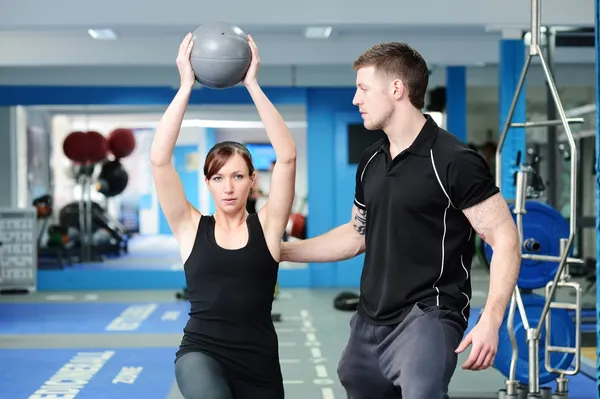So you’ve decided you want to run a marathon – perhaps some of your friends have done it, or you just want to push your own limits.
Keep in mind that a marathon is literally no walk in the park. It’s 26-miles of potentially hilly terrain, which can take a huge toll on an unprepared body. Here are some tips to prepare physically and mentally for the long run…
1. Set The Bar – But Not Too High
Going into the race, you might have a finishing time already in mind that you want to match or beat. However, as Active.com points out, “Even the most seasoned marathoners have no idea what their marathon times will be.”
This is because there are a number of factors involved such as wind, rain, temperature, and – it’s the first time you’ve run a competitive marathon. Try not to break any records, and see the run as an accomplishment in itself.
2. Take it In Stride
It might take a few training runs before you figure out what pace to go at to achieve your best times (that also includes leaving gas in the tank for the final approach). “As a novice runner, the first obstacle to overcome is yourself,” notes Men’s Fitness.
That means you should be prepared to modify training based on your ability, and find what setting is best for practice – indoor or outdoor. “It’s a lot easier to jump off a treadmill vs. running outdoors where giving up means you’ll still have to walk home,” it adds.
3. Step Down Your Training
One tip for preparing for a marathon from an expert at Runner’s World explains you should taper your training – which actually means you reduce how hard your train in the 2-to 4-weeks before the marathon date.
“Tapering is one of the most important aspects of the marathon training cycle and yet, it is also one of the most difficult to implement because runners fear cutting back on training,” says the source. However, cutting back on how hard you hit the pavement will encourage adequate recovery time and peak performance on race day.
4. It’s About More Than Legs
The Huffington Post explains that while we often focus on our legs to take us the 26-miles, there are more muscles involved that you should build on before going the distance.
This means you should add cross-training to your routine that strengthen your abs and core muscles, which will take some of the work away from your thighs and knees that can lead to injuries such as painful IT band syndrome.
5. Find a Marathon Mentor
You can race against your own personal best time, but even then you can use a coach to help you reach that goal through motivation and proper technique.
Active.com has a list of tips for finding a running coach that will fit your personal goals and running style. If you can’t find a suitable coach through your local networks, then you may be able to find an online training plan to help you reach the next level, adds the source.
6. Stay The Course
Don’t try to make any dramatic changes to your diet or your gear on race day, as it can throw off your performance rather than enhance it, offers Active.com.
An expert on the site explains, “Eat what you’ve eaten all season, go with what is tried and true, and consume a slightly higher ratio of carbohydrates.” Trying to pack in too much food or even water can lead to an upset stomach or an electrolyte imbalance, it adds. As for gear – go with what you’ve been training in successfully. Don’t suddenly swap shoes on race day.
7. Know Your Enemy
The enemy in this case is the 26-mile monster in front of you. Runner’s World suggests you should “mimic the course” before trying to run it – which doesn’t mean you have to actually run the marathon route, but find routes that have the same kind of ups and downs (typography).
That includes running the whole training distance on a flat surface if the marathon isn’t an especially hilly one, it adds. Running on level surfaces may sound easier, “but its lack of variation means you’ll be using the same muscles the whole race,” it explains.
8. Give Yourself a Break
You can actually advance your training by taking a break now and then, reminds Competitor Running. Don’t get too caught up in the training, and remember that you need some rest in order to recover (there’s such a thing as overtraining syndrome).
The down time you give yourself between long training runs allow your muscles, bones and “exhausted energy systems” to bounce back even stronger than before, thus truly reaping the benefits of your hard work, it adds.
9. Run Towards the Starting Line
During weeks 10-12 of your training, you should just focus on the race, suggests Men’s Fitness. That means you can concentrate more on sleep and stretching to reduce your chances of injury during the marathon.
You can even go ahead and book a massage for a few days after the race to help you recover, it adds. On the eve of race day, focus on “fueling and hydrating,” says the source. That means you can eat some carb-rich pasta and breads, coupled with a generous amount of water. Remember to stick to your regular diet on race day.
10. Allow Time to Walk it Off
During your training, your instinct will no doubt be pushing you towards going the distance without slowing down. However, Chron.com explains, “Even veteran runners have improved their times and avoided injury and fatigue by adopting a run-walk technique.”
This involves giving yourself 1-minute “walk breaks” after completing each mile on a long training run, it notes. This also applies to the race itself – walk for a minute after each mile marker, which gives you a good chance to hydrate as well. Doing this breaks the race into smaller sections to conquer, rather than seeing it as one unbeatable course.
11. Keep Your Eye on The Prize(s)
Runner’s World says you should also try to set 2-goals before the big run, to help you be more realistic about your performance. Some days you feel better than others, so you should have 2-goals to accommodate either scenario, it adds.
Your primary goal is the one you really want to hit, and what you’ve achieved during your training runs (or slightly better). However, you may run out of steam unexpectedly toward the end of the race – in this case, aim to finish in the top 50-percent, or if things get really tough, just focus on finishing. That’s an accomplishment in itself.
12. Celebrate With Recovery
You finished the marathon! That’s huge. Pat yourself on the back (if you’re not too sore). Active.com has a list of things you should do to help you bounce back following completing a grueling course.
After taking an alternating hot-cold shower, eat some protein, get some quality sleep, and then get moving again (at least a brisk walk), it adds. This will help blood flow for the healing process. See a therapist if you suspect you’ve sustained an injury along the way.















